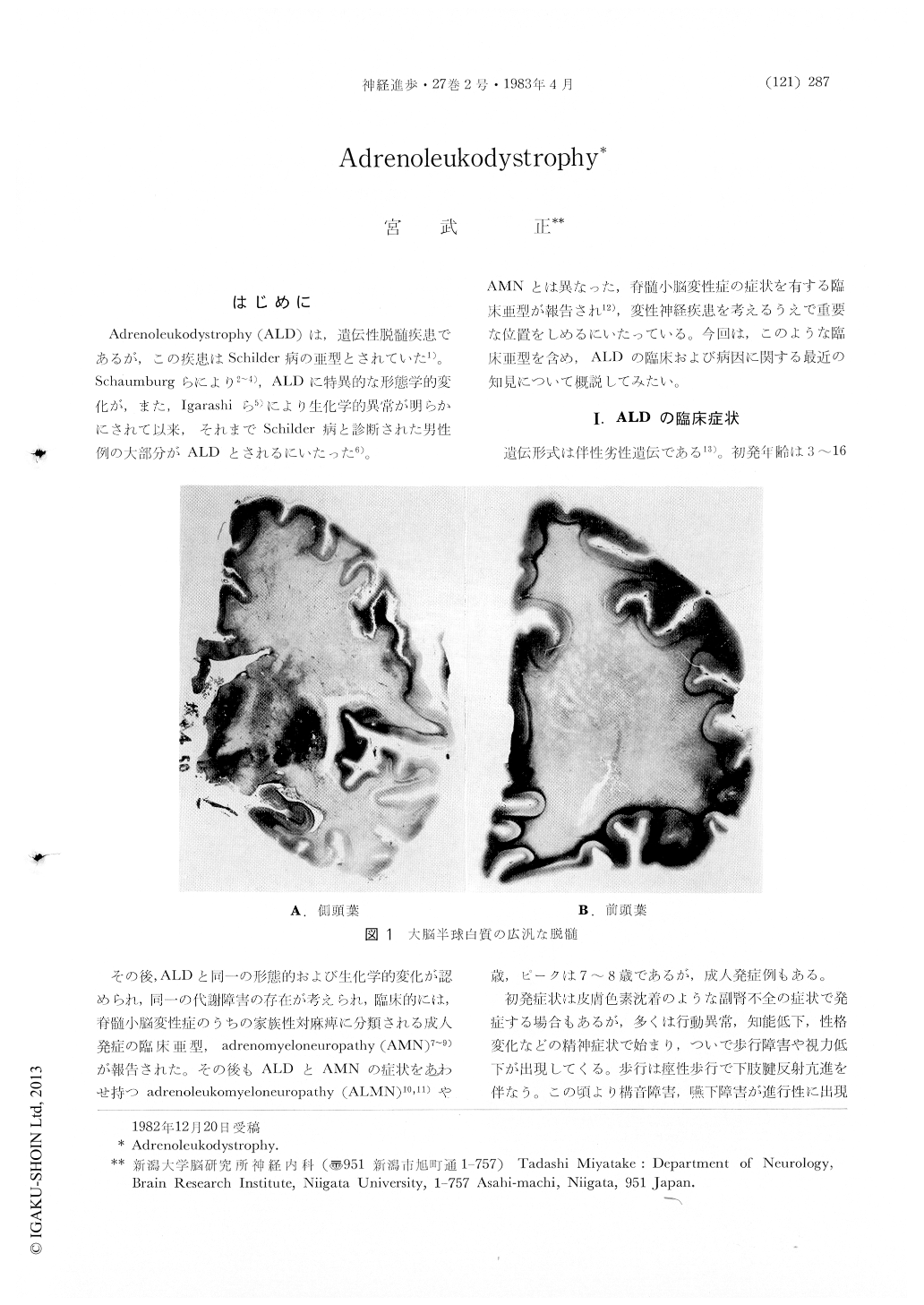- 有料閲覧
- 文献概要
- 1ページ目
はじめに
Adrenoleukodystroplly(ALD)は,遺伝性脱髄疾患であるが,この疾患はSchilder病の亜型とされていた1)。Schaumburgらにより2〜4),ALDに特異的な形態学的変化が,また,Igarashiら5)により生化学的異常が明らかにされて以来,それまでSchilder病と診断された男性例の大部分がALDとされるにいたった6)。
その後,ALDと同一の形態的および生化学的変化が認められ,同一の代謝障害の存在が考えられ,臨床的には,脊髄小脳変性症のうちの家族性対麻痺に分類される成人発症の臨床亜型,adrenomyeloneuropathy(AMN)7〜9)が報告された。その後もALDとAMNの症状をあわせ持っadrenoleukomyeloneuropathy(ALMN)10,11)やAMNとは異なった,脊髄小脳変性症の症状を有する臨床亜型が報告され12),変性神経疾患を考えるうえで重要な位置をしめるにいたっている。今回は,このような臨床亜型を含め,ALDの臨床および病因に関する最近の知見について概説してみたい。
Abstract
Adrenoleukodystrophy (ALD) is a fatal X-linked hereditary demyelinating disease with the involve-ment of adrenal cortex and testis and charac-terized clinically by a variable degree of adrenal insufficiency and progressive dementia, spastic quadriparesis and blindness.
The pathological findings are the diffuse de-myelination of cerebral white matter with peri-vascular cuffing and adrenal atrophy with the striated ballooned cells in zona fasciculata and reticularis.

Copyright © 1983, Igaku-Shoin Ltd. All rights reserved.


